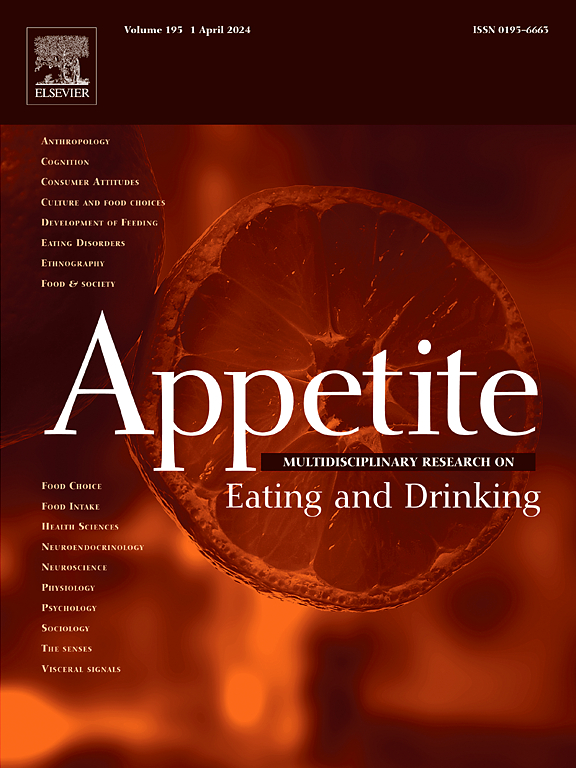屏幕暴露对成人食物摄入的时间戳效应:实验研究的荟萃分析。
IF 4.6
2区 医学
Q1 BEHAVIORAL SCIENCES
引用次数: 0
摘要
目的:本研究的目的是检查屏幕暴露对健康成年人食物摄入的时间戳影响。方法:检索截至2024年8月31日的ProQuest、PubMed、Web of Science和Embase 4个电子数据库。采用反方差荟萃分析计算观看组和不看组以及不同屏幕内容(如食物提示)组之间食物摄入量的标准化平均差异(SMD)。结果:纳入23项实验研究,1,894名参与者。观看画面(vs.非观看组,SMD: 0.16;95% ci: 0.06, 0.26;I2 = 42%;pI2 = 25%;P = 0.01)。结论:不管屏幕上显示什么内容,成年人尤其是女性在看屏幕时吃得更多。考虑到研究设计的影响,需要更多高质量的主题内研究来了解屏幕暴露与食物摄入之间的复杂关系,最终促进更健康的饮食习惯。本文章由计算机程序翻译,如有差异,请以英文原文为准。
The time-stamped effects of screen exposure on food intake in adults: A meta-analysis of experimental studies
Objective
The purpose of this study was to examine time-stamped impacts of screen exposure on food intake among healthy adults.
Methods
Four electronic databases were searched up to August 31, 2024, including ProQuest, PubMed, Web of Science and Embase. A meta-analysis of inverse variance was used to calculate the standardized mean difference (SMD) in food intake between watching and not watching screen groups, and groups with different screen contents (e.g., food cues).
Results
23 experimental studies with 1894 participants were included. Watching screen (vs. not watching group, SMD: 0.16; 95% CI: 0.06, 0.26; I2 = 42%; p 0.01) significantly increased food intake, while the impact of the contents, including food cues, weight control cues and TV conditions, displayed on screens on food intake was not significantly different. Subgroup analysis revealed that food intake increased significantly with exposure to screens in females (SMD: 0.20; 95% CI: 0.04, 0.35; I2 = 25%; p = 0.01).
Conclusion
Adults especially females eat more while watching screen, whatever the screen content displayed on the screen. Given the influence of study designs, more within-subject studies with high quality were required to understand the intricate relationship between screen exposure and food intake, ultimately managing promoting healthier dietary habits.
求助全文
通过发布文献求助,成功后即可免费获取论文全文。
去求助
来源期刊

Appetite
医学-行为科学
CiteScore
9.10
自引率
11.10%
发文量
566
审稿时长
13.4 weeks
期刊介绍:
Appetite is an international research journal specializing in cultural, social, psychological, sensory and physiological influences on the selection and intake of foods and drinks. It covers normal and disordered eating and drinking and welcomes studies of both human and non-human animal behaviour toward food. Appetite publishes research reports, reviews and commentaries. Thematic special issues appear regularly. From time to time the journal carries abstracts from professional meetings. Submissions to Appetite are expected to be based primarily on observations directly related to the selection and intake of foods and drinks; papers that are primarily focused on topics such as nutrition or obesity will not be considered unless they specifically make a novel scientific contribution to the understanding of appetite in line with the journal's aims and scope.
 求助内容:
求助内容: 应助结果提醒方式:
应助结果提醒方式:


